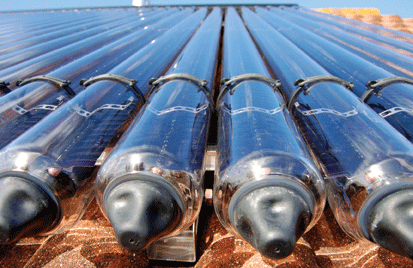
|
Published:
Coming clean on phantom RECs
Renewable energy developers and environmental NGOs are becoming increasingly concerned about design flaws in the expanded national Renewable Energy Target (RET), which was passed into law by Parliament in August 2009.

|
|
Mark Diesendorf says changing local planning laws to exclude solar hot water heaters from permission requirements would be a very supportive decision. Credit: iStockphoto
|
In theory, according to the Department of Climate Change website, RET ‘is designed to ensure that 20 per cent of Australia’s electricity comes from renewable sources by 2020’. More precisely, an additional 35 500 gigawatt hours per year of electricity should be generated from renewable sources by 2020. In practice, the design of RET ensures that this target cannot be reached.
First, the design allows a large proportion of the additional target to be met by solar hot water. Based on experience with the previous Mandatory Renewable Energy Target (MRET), solar hot water could take 25 to 35 per cent of the new additional target. While solar hot water potentially has a significant role to play in substituting for coal-fired electric hot water, it already receives a $1600 rebate from the federal government plus various state and territory subsidies, with the result that it’s already cost-effective in most of Australia. What it really needs is legislation by state governments to stop local governments from requiring planning permission for its installation, which is currently a major disincentive.
The second major design flaw is that ‘phantom’ Renewable Energy Certificates (RECs), which do not represent additional renewable electricity generation, are counted as contributing towards achievement of the target. These ‘phantom’ certificates are created by the Solar Credits Scheme, in which households and businesses that install small-scale renewable electricity systems receive additional RECs to the usual one REC per megawatt hour (MWh) of electricity deemed to be generated. For the first three years of the scheme, each system receives five RECs (that is, one real and four ‘phantom’ RECS) per MWh; over time this is stepped down until no ‘phantom’ RECs are received after mid-2015.
All the RECs are worth money up-front to the household or business installing the system, providing an important subsidy on the capital cost. However, there is no rational justification for counting ‘phantom’ RECs as contributing to the target. For example, if in financial year 2009–10 households install 12 per cent of RET’s eligible renewable energy quota for that year, it will be counted under RET as 60 per cent of the target for that year. Furthermore, if an additional 30 per cent of the RET goes to solar hot water, then only 10 per cent of the target would remain for large-scale renewable energy generation.
Another adverse effect of the ‘phantom’ RECs will be to drive down the REC price. As long as the REC price is lower than the cost differential between ‘dirty’ and ‘clean’ generation, investors will not receive the price signal required for investment in renewable electricity.
The principal outcome of the design flaws is to delay wind farms and possibly bioenergy power stations for up to five years. At present, planning permission has been received for thousands of megawatts of wind power capacity across several states. Some wind farms are already under construction in anticipation of receiving RECs that would enable them to bridge the price gap to greenhouse-polluting coal power. However, unless phantom RECs and solar hot water are removed from the RET, the majority of these projects will inevitably fail.
Even if the design flaws are fixed, basic renewable energy certificate schemes have inherent limitations: they only assist the lowest cost sources of renewable electricity. However, in the context of a serious strategy to cut Australia’s greenhouse gas emissions by 60 per cent or more by 2050, we also need policies to support the expansion of utility-scale renewable energy systems that are commercially available and currently expensive, provided they have huge potential: notably concentrated solar thermal power with thermal storage and large solar PV power stations. This could be achieved by creating new, additional RETs for these technologies.
Alternatively, feed-in tariffs, which have worked well in Europe, could be extended to large renewable electricity systems.
Dr Mark Diesendorf is Deputy Director of the Institute of Environmental Studies at the University of New South Wales, and was Foundation Director of the Institute for Sustainable Futures at University of Technology Sydney (1996–2001). His work is in the interdisciplinary fields of sustainable energy, ecological economics, and practical processes for ecologically sustainable and socially just development. He teaches and consults and has contributed widely to public discussion on sustainability in the media.



